27 June 2016
Yellowstone hot springs: Upsetting your color scale
Posted by Jessica Ball
I was fortunate enough to spend several weeks in Yellowstone National Park this summer, doing geophysical surveys in hydrothermal areas. I’ll be talking about those elsewhere in a few weeks (keep an eye on the AGU Instagram!), but in the meantime I wanted to show off some of the other excellent features of the park. Fieldwork in Yellowstone – and especially fieldwork with electrical equipment – is at the mercy of weather, and in the summer that often means stopping for thunderstorms even if it’s still light out. On an ideal summer day we’d be able to work until six or seven, but when we had to stop because of lightning, we tried to take time to see the hot springs and geysers that are open to the public. (It’s a lot nicer to walk around on boardwalks than it is in the backcountry!)
Nearly everyone who’s read a travel magazine has seen photos of Yellowstone’s thermal features, and they are fantastic. But seeing them as a scientist adds another layer of fascination, because there are so many things to think about. How hot do they get? Why are they there? And why are they so colorful?
In science, color is used to show gradients, and in many parts of geology, temperature scales. Visually rainbows are very impactful (even if they aren’t good in graphic design terms), but for most people, a rainbow is composed of “warm” and “cold” colors – reds are “warm” and blues and greens are “cool”. In Yellowstone, however, that color scale gets turned on its head. Hot springs and thermal features in the park can have temperatures of up to 93 °C (199 °F – the boiling temperature at the elevation of the Yellowstone Plateau), but it’s waters much cooler than boiling temperature that shows the warmest colors. Totally counter-intuitive, when it’s based on your usual understanding of the color scale – so why the reversal?
“Thermophile” is a fancy way of saying “heat-loving”, and it refers to the bacteria that live in almost every hot spring at Yellowstone. They’ve adapted to live in the near-boiling temperatures and acidic (or basic) waters that would kill other critters. And they’re pretty colorful, for various reasons – some photosynthesize and contain chlorophyll, others use chemosythnesis to make their food.
Here’s an overview of the colors, their associated bacteria, and the temperatures they thrive at (courtesy of the NPS):
| Name | pH and Temperature | Description | Location |
| Cyanobacteria Calothrix |
pH 6–9 30–45°C (86–113°F) |
Color: dark brown mats Metabolism: photosynthesis by day; fermentation by night |
|
| Phormidium | pH 6–8 35–57°C (95–135°F) |
Color: orange mats Metabolism: photosynthesis |
|
| Oscillatoria | pH 6–8 36–45°C (96–113°F) |
Color: orange mats Metabolism: photosynthesis; oscillating moves it closer to light sources. |
|
| Synechococcus | pH 7–9 52–74°C (126–165°F) |
Color: green mats Metabolism: photosynthesis by day; fermentation by night |
|
| Green Sulfur Chlorobium |
pH 6–9 32–52°C (90–126°F) |
Color: dense, dark green mats Metabolism: anaerobic photosynthesis— produces sulfate and sulfur, not oxygen. |
|
| Green non-sulfur Chloroflexus |
pH 7–9 35–85°C (95–185°F) |
Color: green mats Metabolism: anaerobic photosynthesis |
|
| Aquifex Hydrogenobaculum |
pH 3–5.5 55–72°C (131–162°F) |
Color: yellow and white streamers Metabolism: uses hydrogen, hydrogen sulfide and carbon dioxide as energy sources; can use arsenic in place of hydrogen sulfide. |
|
| Deinococcus-Thermus Thermus |
pH 5–9 40–79°C (104–174°F) |
Color: bright red or orange streamers; contains carotenoid pigments that act as sunscreen. |
|
Bacteria like this account for the reds and greens and yellows in the hot springs – but what about the blues? Well, those are, in fact, not actually blue. The hottest waters in the springs and geysers, which can sometimes even be above boiling (or superheated), aren’t hospitable even for the most hardy bacteria. Because they lack bacterial life, they’re extraordinarily clear. The blue color comes from the scattering of sunlight in deep clear water (it’s the color that scatters the most, so that’s what we see):
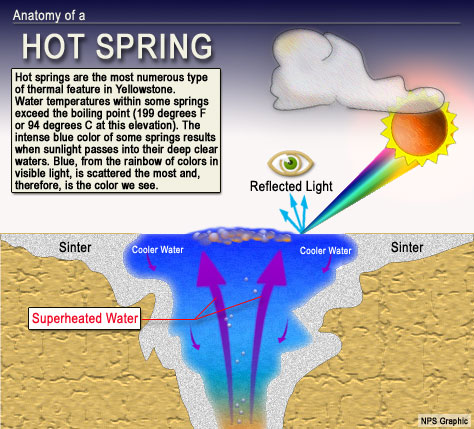
An NPS graphic explaining how light is scattered in a hot spring at Yellowstone. (Image from https://www.nps.gov/yell/learn/nature/images/hotspring_works.jpg)
So here we have a range of colors from reds and oranges:
To yellows:
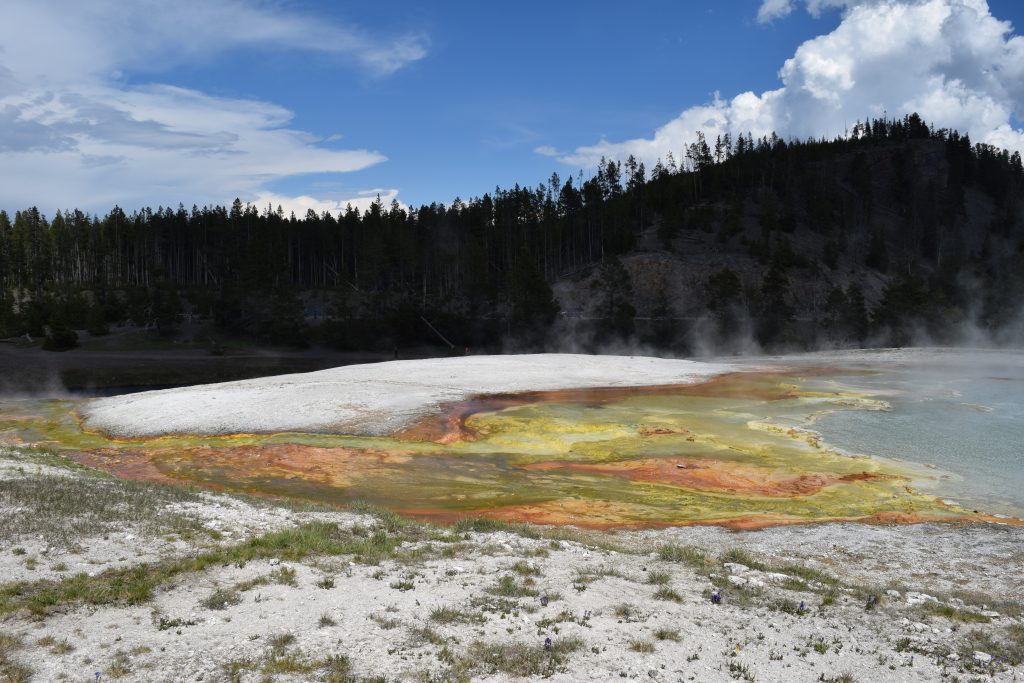
Yellow and orange bacteria in the runoff from the Excelsior Geyser Crater in the Midway Geyser Basin
To greens:
To blues:
And the very clearest, hottest blues:
Some springs even show a full range of rainbow colors:
The combination of the surface manifestation of Yellowstone’s volcanic activity and the biology that exploits them makes for some really beautiful scenery. Every once in a while someone asks me if thinking like a scientist ever interferes with my ability to enjoy the landscape around me, and my answer is always that it never does. If anything, it makes it better – endlessly entertaining as well as beautiful.
Additional Resources:
Hot Springs and Hydrothermal Features at Yellowstone (Yellowstone National Park Website)
Thermophilic Bacteria (Yellowstone National Park Website)
FAQs and Facts About Yellowstone (USGS Yellowstone Volcano Observatory)
Taking the Temperature of Norris Geyser Basin (USGS Yellowstone Volcano Observatory)


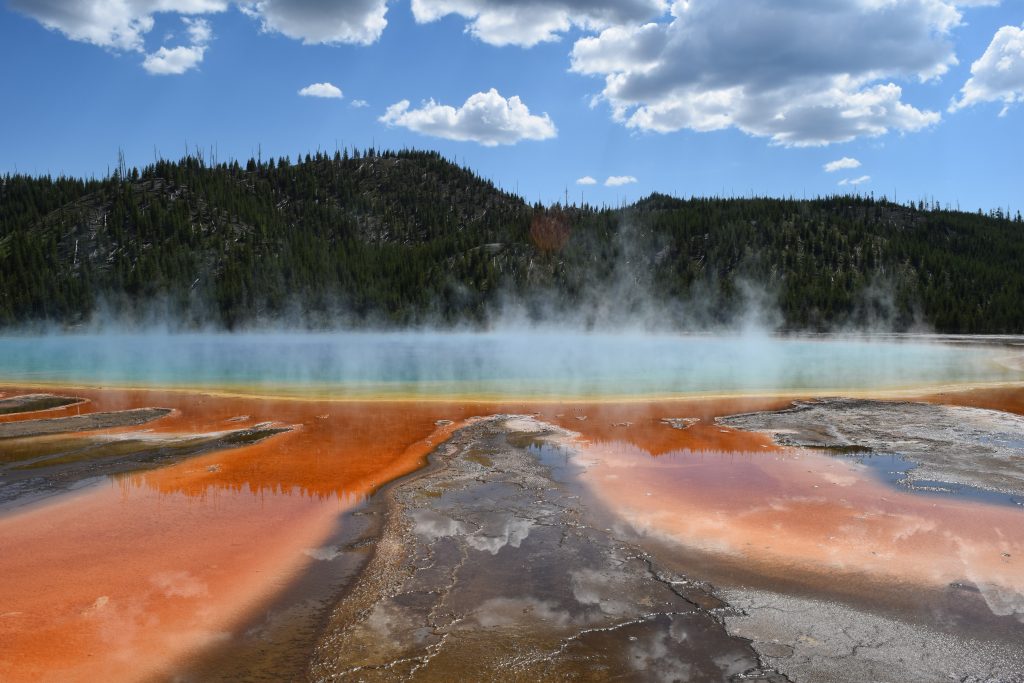
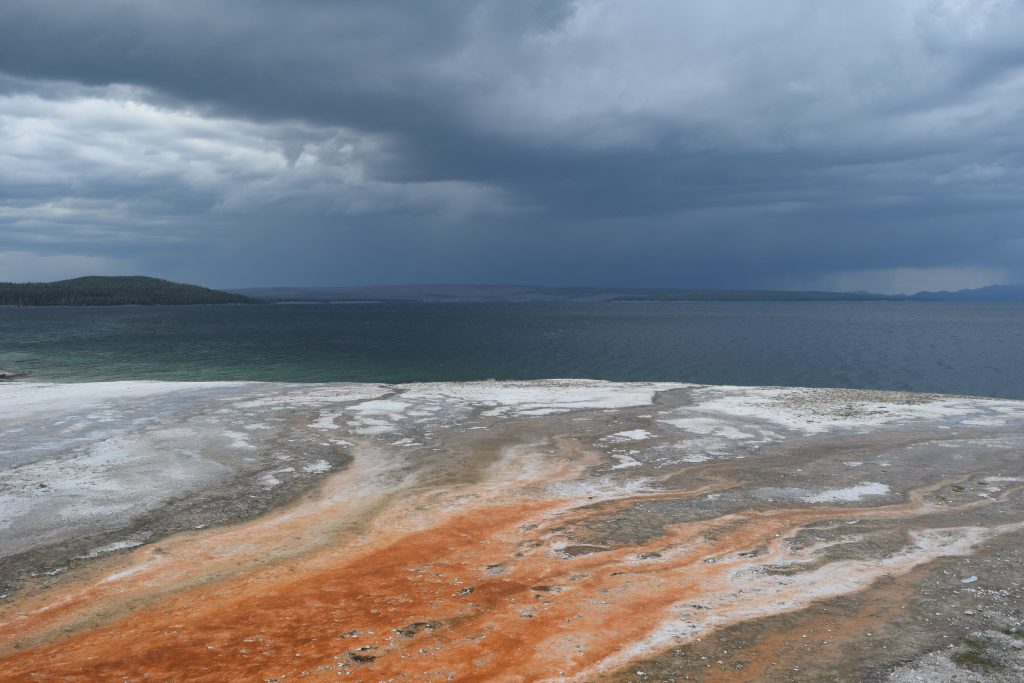
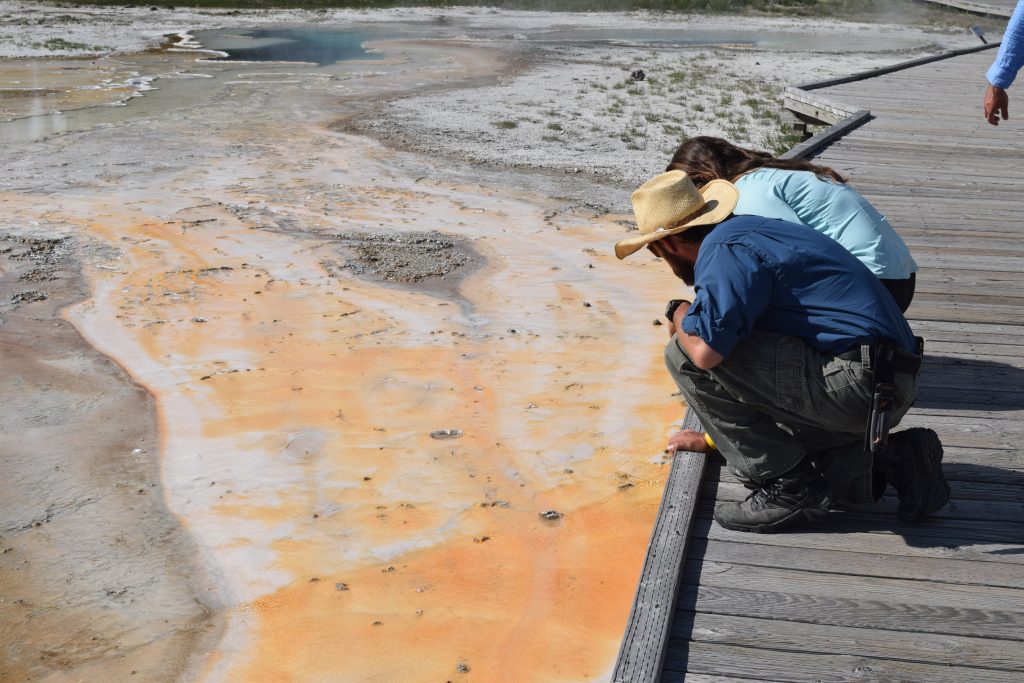
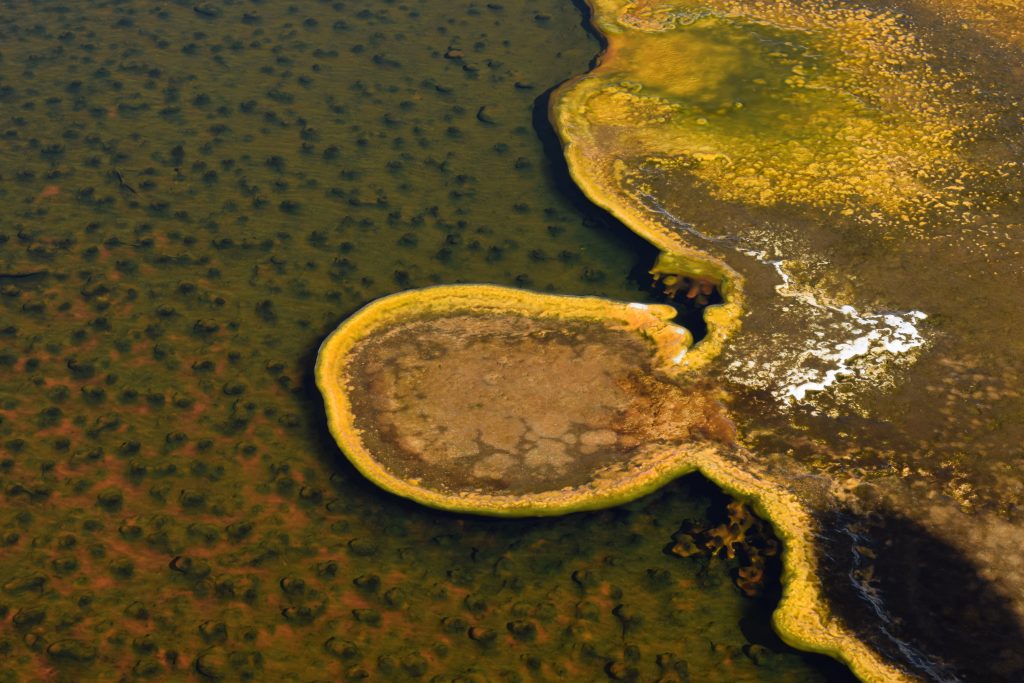
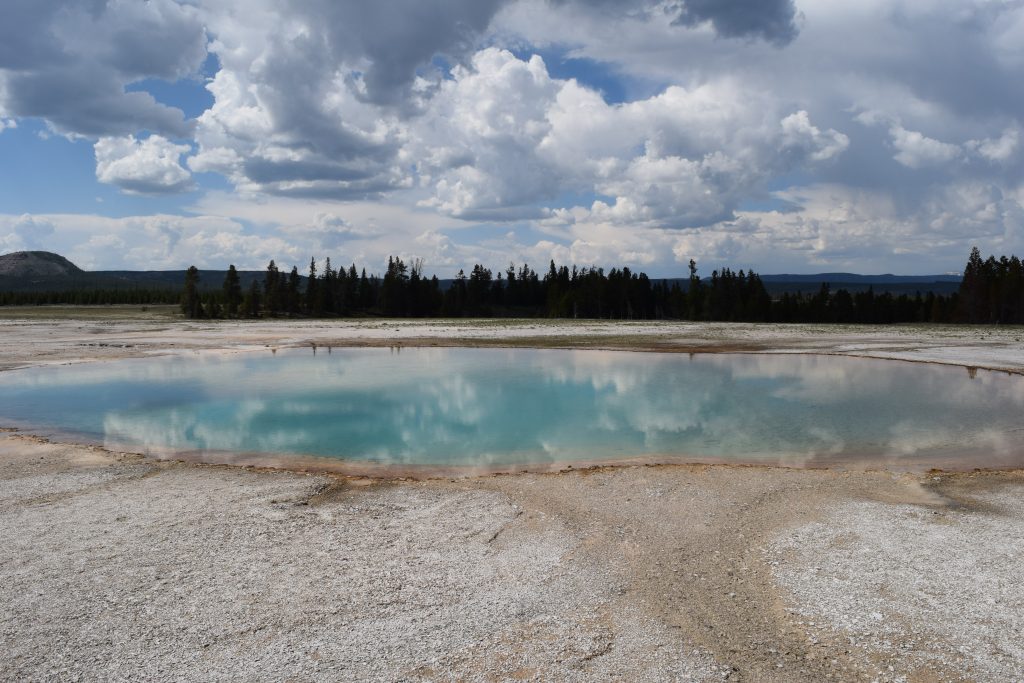
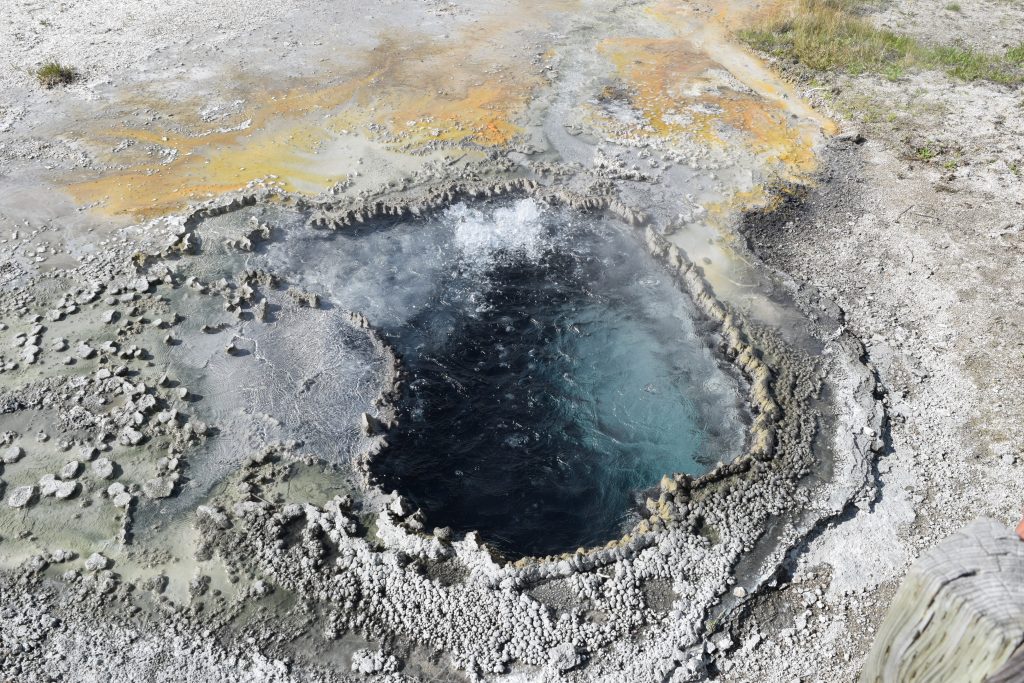
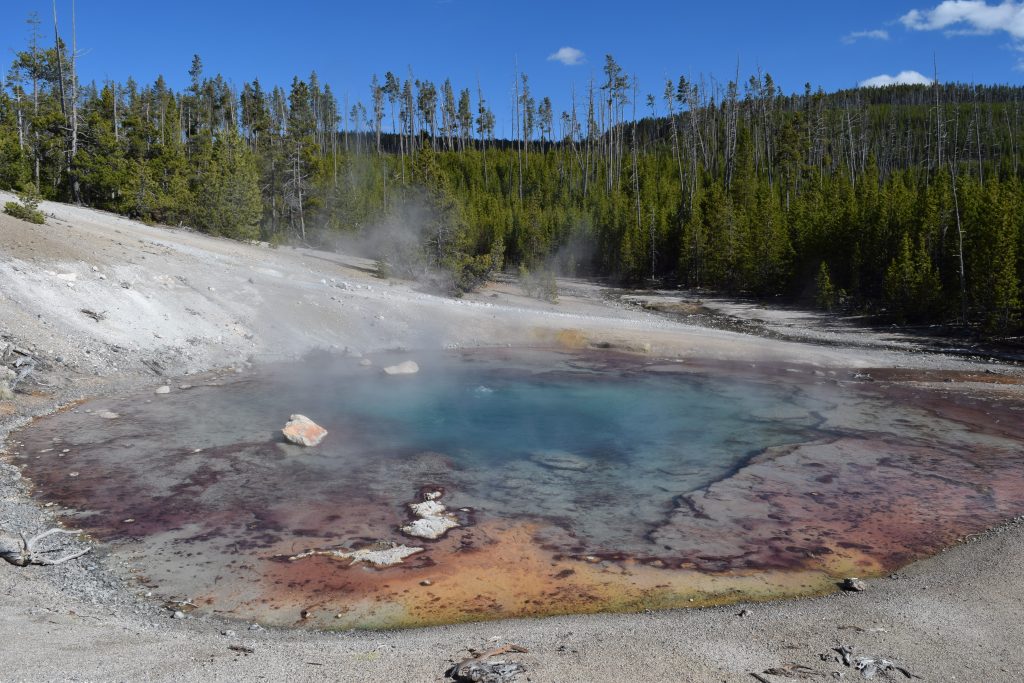
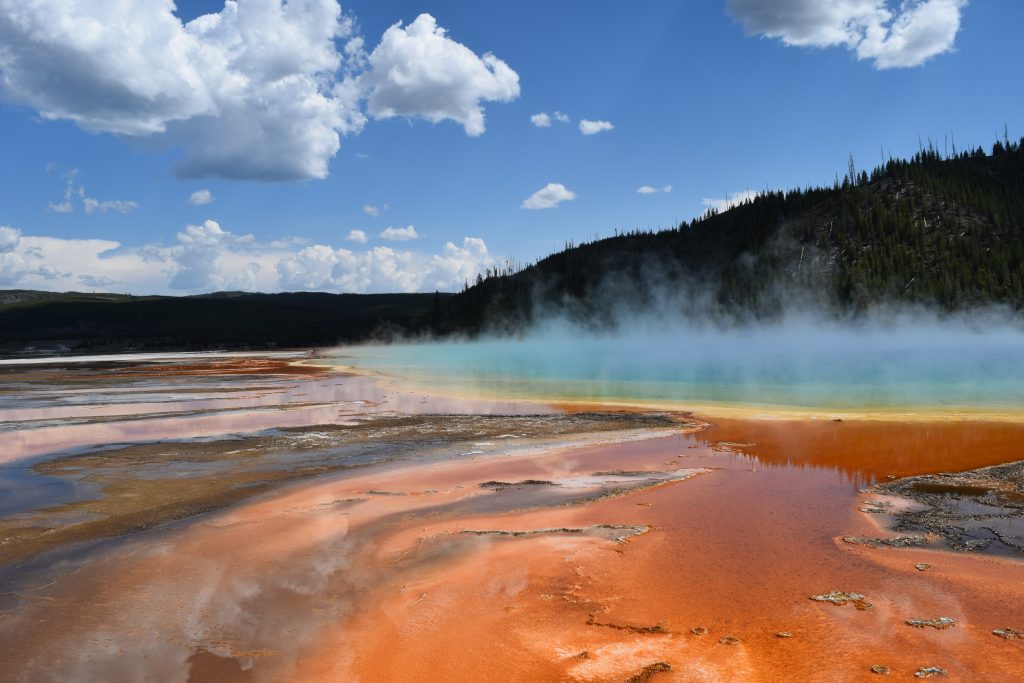
 Jessica Ball is a volcanologist at the U.S. Geological Survey, researching volcanic hydrothermal systems and stability, and doing science communication for the California Volcano Observatory. She previously worked at the Geological Society of America's Washington DC Policy Office, learning about the intersection of Earth science and legislative affairs. Her Mendenhall postdoc and PhD focused on how water affects the stability of volcanoes, and involved both field investigations and numerical modeling applications. Her blogging covers a range of topics, from her experiences in academic geosciences to science outreach and communication to her field and lab work in volcanology.
Jessica Ball is a volcanologist at the U.S. Geological Survey, researching volcanic hydrothermal systems and stability, and doing science communication for the California Volcano Observatory. She previously worked at the Geological Society of America's Washington DC Policy Office, learning about the intersection of Earth science and legislative affairs. Her Mendenhall postdoc and PhD focused on how water affects the stability of volcanoes, and involved both field investigations and numerical modeling applications. Her blogging covers a range of topics, from her experiences in academic geosciences to science outreach and communication to her field and lab work in volcanology.
Very usefully scientific and public information with the real data and new paradigm. I have been working to making correlation between the three spectacular related to the Hydrothermal systems: 1) the modern vent Hydrothermal in the mid-oceanic ridge, 2) the Yellow stone Hydrothermal related the shallow magma chamber of the hot spot; and 3) the Lusi (the Sidoarjo mud eruption) as sediment-hosted hydrothermal system developed in the back-arc region, that has confirmed linked with the volcanoes in the close in the fore-arc region. One parameters would be the nonoccurence of microbial living in the extreme environments.
[…] Yellowstone hot springs: Upsetting your color scale […]
[…] 3. Koski A.K., Wood S.A. "The Geochemistry of Geothermal Waters in the Alvord Basin, Southeastern Oregon". 2004. Taylor & Francis Group, London. 4. Jessica Ball. "Yellowstone hot springs: Upsetting your color scale". 2016. Link. […]